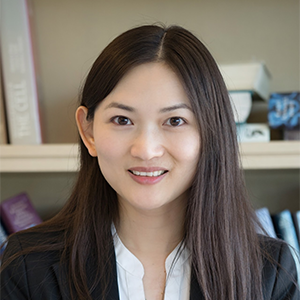Colloquia & Guest Speakers
Pico-Second Laser Scanning Chemical-bond Imaging of Metabolic Activities in Aging and Diseases
Professor Lingyan Shi, Professor in Bioengineering, UC San Diego
Monday, March 18, 2024
3:30 p.m.
Presented in-person in Goergen 101 and on Zoom
Zoom Information
Zoom:https://rochester.zoom.us/j/91669460596?pwd=T1VzbEFreVd3NFR5QnlUV09YWlZWZz09
Meeting ID: 916 6946 0596
Passcode: 0330
Abstract
Metabolism is a complex biochemical process in living organisms that involves different biomolecules and consists of various reaction steps. To understand the multi-step biochemical reactions involving various components, it's essential to elucidate in-situ dynamics and the correlations between different types of biomolecules at subcellular resolution. In this context, we integrated deuterium-probed pico-second stimulated Raman Scattering (DO-SRS), multiphoton fluorescence (MPF), and second harmonic generation (SHG) into a single microscopy system to study metabolic activities in cells, tissues, and animals during aging and diseases.
We further developed this multimodal microscopy into a super-resolution multiplex imaging platform using the Adam-based Pointillism Deconvolution (A-PoD) algorithm. By combining it with heavy water or deuterated metabolites probing (glucose, amino acids, fatty acids, etc.), we directly visualized the metabolic changes of various biomolecules in animal organs such as the brain, adipose tissue, liver, muscle, and ovaries during aging processes (mouse and drosophila). We quantitatively analyzed the turnover rates of proteins and lipids, lipid unsaturation rates, and optical redox ratios in situ at the subcellular organelle scale. We also studied the spatially correlated distributions of various metabolites using a custom-designed analysis method.
One of our key findings revealed that lipid turnover decreases earlier in aged female drosophila compared to males. Additionally, we observed that dietary restriction and downregulation of the insulin/IGF-1 signaling (IIS) pathway, both known to extend lifespan, significantly enhanced brain lipid turnover in aging flies. This platform empowers researchers to quantitatively image various molecular events in the same region of interest. It provides powerful tools for early-stage disease detection, prognosis, and treatment, as well as for a deeper mechanistic understanding of the fundamentals of aging and diseases.
Biography

Lingyan Shi’s research focuses on developing high-resolution, high-speed multimodal microscopy and its applications for studying metabolic dynamics in aging and diseases. She discovered the "Golden Window" for deep tissue imaging and developed the metabolic imaging platforms including “DO-SRS” and “STRIDE”. Shi group at UCSD transformed SRS into a super-resolution multiplex microscopy using A-PoD and PRM algorithms, uncovering lipid metabolic dynamics in the brain and fat tissues during aging processes. Dr. Shi holds 15 pending and awarded patents. She received the Blavatnik Regional Award for Young Scientist in 2018, the Hellman Fellowship Award in 2021-2022, the "Rising Star Award" from Nature Light Science & Applications in 2021, the “Advancing Bioimaging Scialog Fellow" by RCSA and CZI, the “David L. William Lecture & Scholarship” Award from the Kern Lipid Conference, and the “Sloan Research Fellow” Award in Chemistry in 2023.
